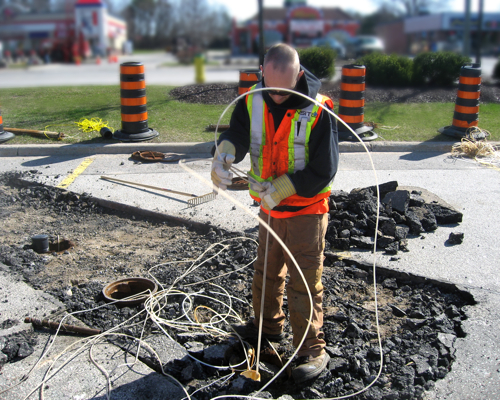Aerobic Bioremediation
Enhancing natural, organic processes to affect green remediation!
With sufficient oxygen (aerobic conditions) and other nutrients, microorganisms will use many organic contaminants as a food source, effectively breaking them down into carbon dioxide, water, and microbial cell mass. We work to increase the rate at which the microbes bioremediate the organic contaminants by favourably “enhancing” the conditions through increasing the concentration of electron acceptors and nutrients in groundwater. As one of Canada’s most experienced firms in the design and implementation of In-Situ Bioremediation, we have conducted Aerobic Bioremediation programs in a variety of geologic settings.

Important Considerations
1. Successful aerobic bioremediation efforts must incorporate all of the necessary components: an abundant supply of electron donors, nutrients for building cell mass, active cultures to spur on microbial growth, and enzyme enhancements to increase bioavailabilty.
2. Very high concentrations of contaminants can negatively affect the micro-organisms before they can accomplish their work. At high contaminant concentrations, an integrated approach is often required. First, another remedial option, such as chemical oxidation or physical removal, will be used to reduce contaminant concentrations. When contaminant concentrations are sufficiently reduced, bioremediation will be used to complete contaminant breakdown.
3. Aerobic bioremediation is a very effective approach to address petroleum hydrocarbons, yet is often of limited effectiveness when addressing chlorinated hydrocarbons such as PCE and TCE.
Methods
For aerobic bioremediation, oxygen is the main electron acceptor; methods that oxygen can be delivered include: Oxygen Releasing Devices, Oxygen Releasing Compounds, Biosparging, Bioventing, Air Sparging, Ozone, and Hydrogen Peroxide Enhancement.
The Results
An effective method for degrading BTEX, petroleum hydrocarbons such as gasoline or fuel oil, or MtBE, in soil and groundwater, enhanced aerobic bioremediation (or “oxidative bioremediation”) creates conditions in which naturally occurring or injected micro-organisms, such as bacteria or fungi, in the presence of sufficient oxygen, will feed on contaminants, breaking them down into less-toxic compounds and harmless by-products.
Ready to get started?
Speak with our engineering team about how our environmental remediation services can help you in your remediation journey and take the next steps to building a better environment and a cleaner community with your project.
I'm ready to Start